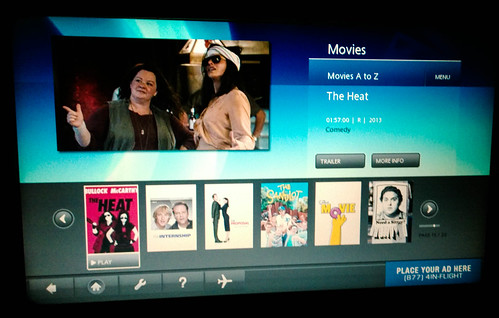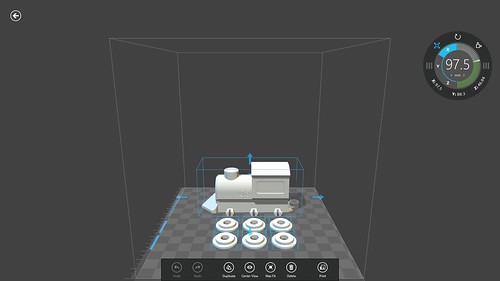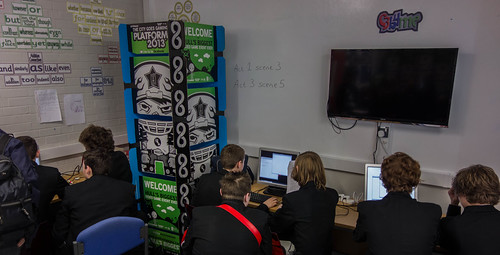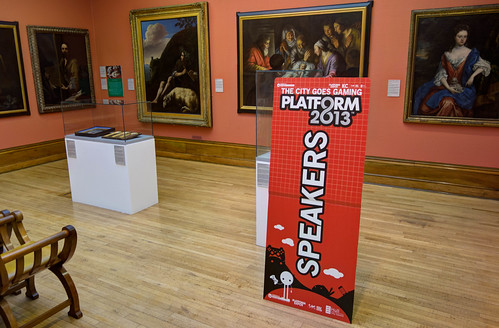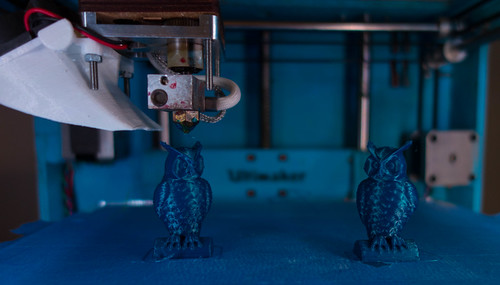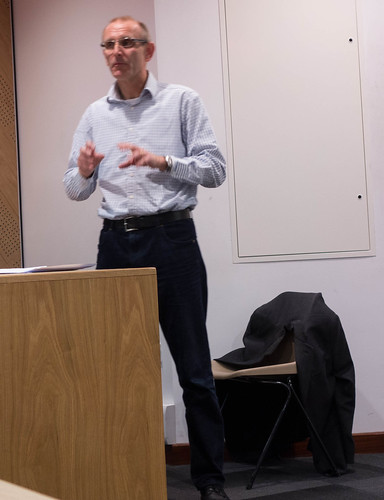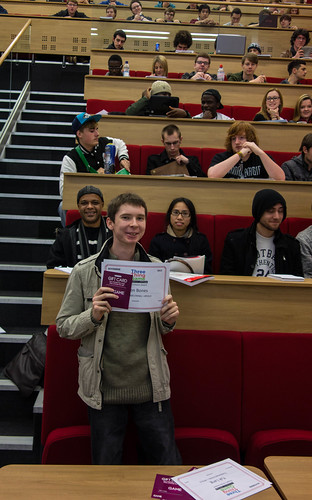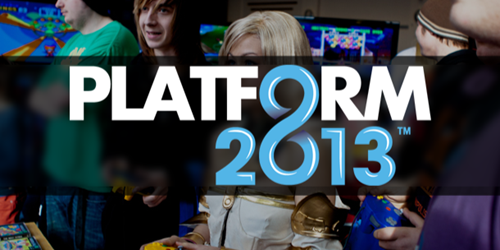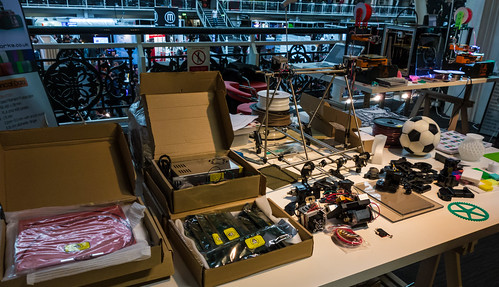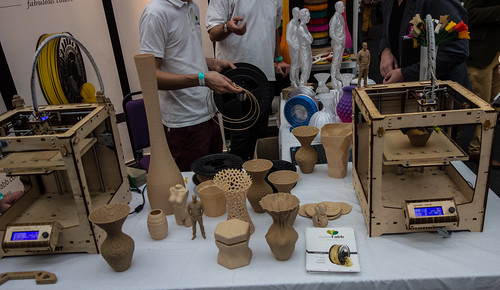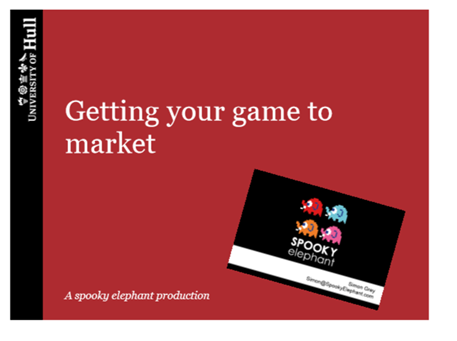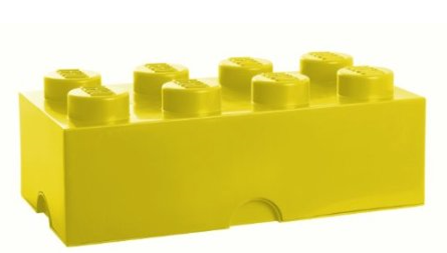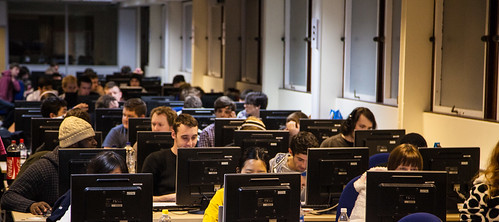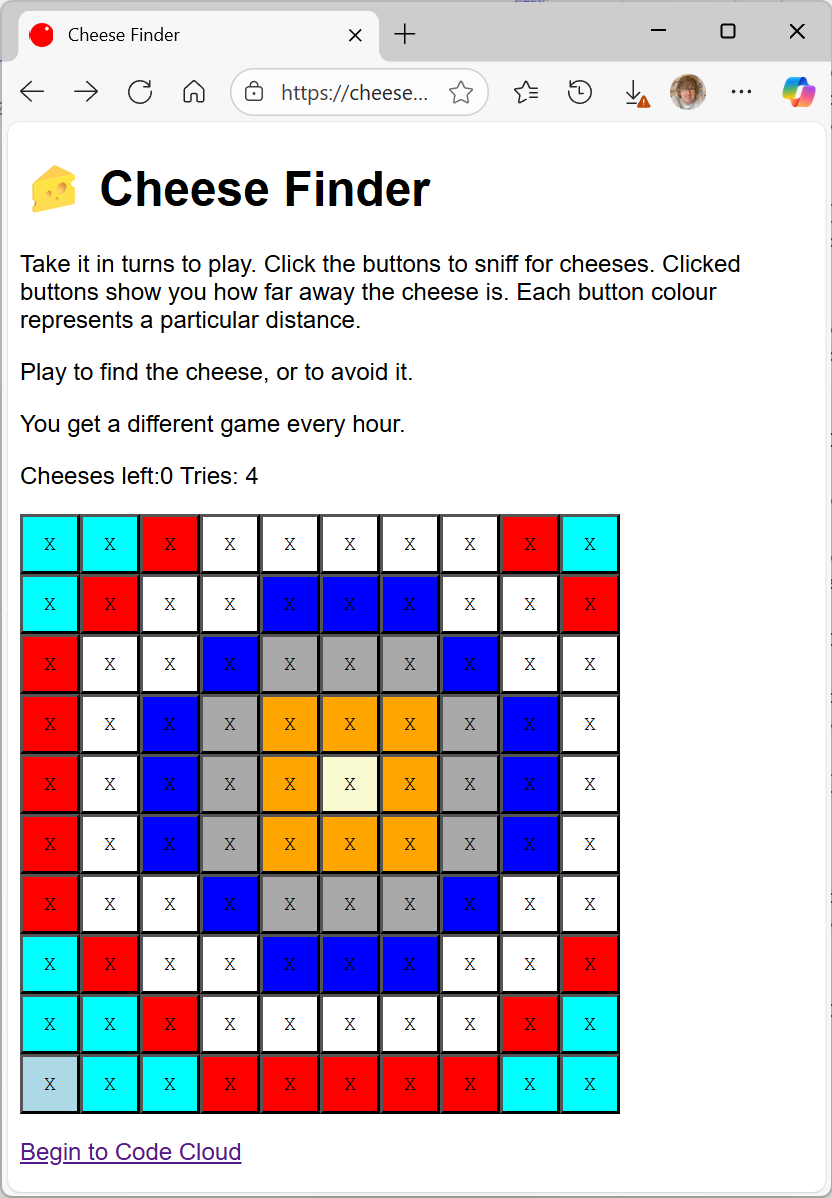Well, after a day of solid development we had our finals. I’d expected some attrition, particularly as the event came on the end of a tough day in a tough teaching week, but at the end we had 25 teams ready to be judged and so our three teams of judges sallied forth into the fray. They were looking for adherence to the theme of the three things, presentation quality and plain good old playability. After they had seen their assigned teams they each came back with three entries worthy of a finalist place. So we headed to the lecture theatre, fired up the Surface and gave each team three minutes to pitch their game to the whole audience.
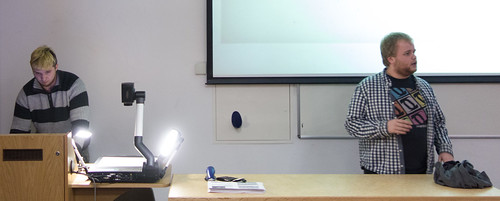
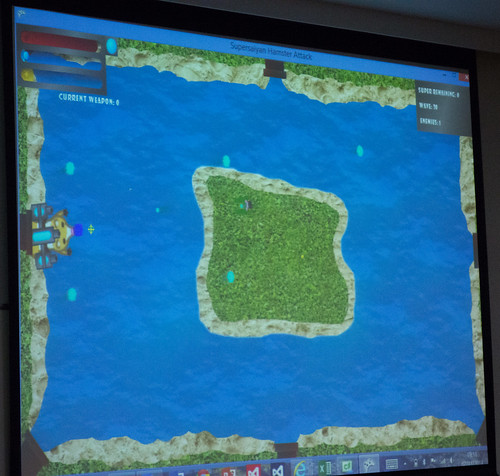
First up was “Two Thing Game”: Episode 2”, otherwise known as Mateusz Bajer and Ben Convenley. They had taken “Super Saiyan”, “Hamster” and “Water Fight” and fashioned an island defence game, with you as the Saiyan in the title beating off hoards of hamsters intent on stealing your water. Above you can see the “Boss Hamster” about to enter the fray. Proper hamster blasting fun.
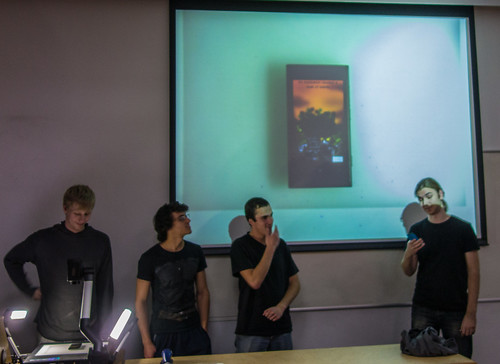
The second team to present had the best name I reckon. “The Bing Wang Theory”, Adam Brookes, James Briffa, Alex Belezjaks and Artur Neugodnikovs had made a Windows Phone game out of "Radioactive", "Spider" and "Racing". The game had you tipping the phone to dodge the radioactive bullets hurtling towards you, while trying to create chains of colour in the bullet stream that would change them into harmless isotopes. A nice balance of challenges in a single game that made really good use of the accelerometer and touch screen on the phone. They even had a back story in rhyme. I hope this one makes it into Windows Phone Marketplace.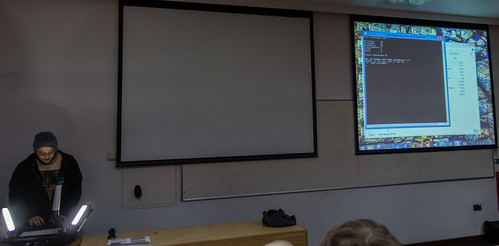
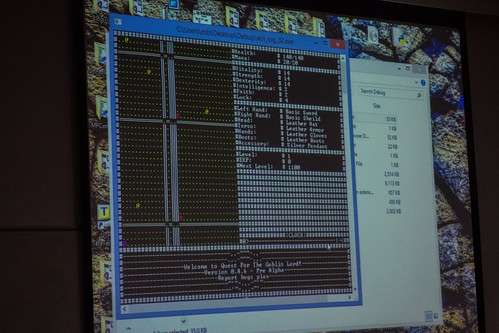
Next up was “Teams are for losers, and so are graphics”. This was a one man team who did everything with ASCII characters. Living up to the name in the most literal manner possible. William Grey had fashioned an entirely text powered RPG around the things “Pork”,”Crates” and “Light Cycles”. After a slight hiccup at the start due to the fact that the demonstration machine lacked a numeric keypad, William was able to show how to move around the environment searching for crates containing the life-enhancing bacon.

The next team to present were Spooky Elephant. To my eternal shame I was so caught up in the excitement of seeing the team I was kind of part of present at finalist level that I neglected to take any pictures of the presentation. Still, the team of Simon Grey, David Parker, David Miles, Lewis Jackson and others had produced a very playable game from a starting point of “Walrus”, “Swimming” and “Custard”. Above you can see Wilbur the Walrus being steered away from the impending custard tsunami.
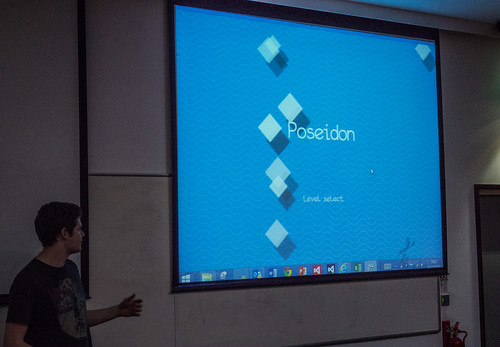

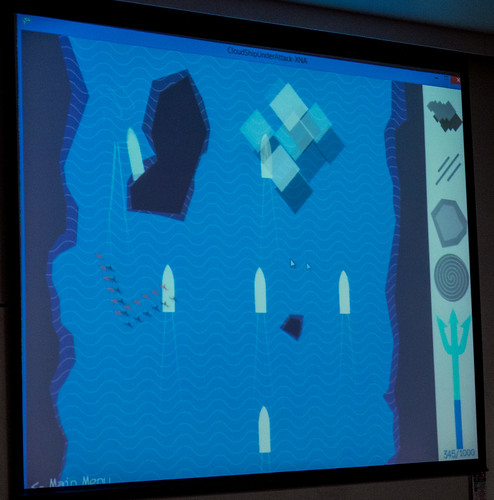
The “Rusty Spoons” are a Three Thing Game institution. Thomas McPherson,
|
|
Tim Roth and
|
|
Matthew Narey have been involved since the very first competition, many years ago. As befits experienced developers they had created a stunning looking tower defence game from “Clouds”, “
|
Ship” and “
|
under attack”. The player has to stop the ships getting through bye using clouds to generate wind, whirlpools and all manner of bad things.
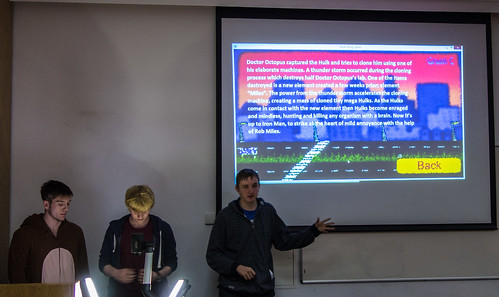
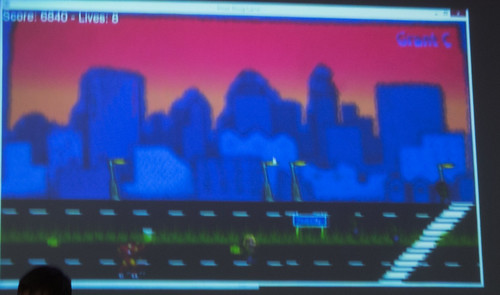
This was the first Three Thing Game for the Grant C team. But Matt Jemmett,
|
|
Matt Rose,
|
|
Luke Stewart and
|
|
Jordan Tavaglione put on a great show with their take on “Sidescroller, “Marvel” and “Zombie”. With guest appearances from Iron Man and a zombified Hulk, the game had frantic shooting action as the player tried to stop the hulks from passing. This game also featured custom recorded voice acting and “Rob Miles” bullets. Can’t be bad.

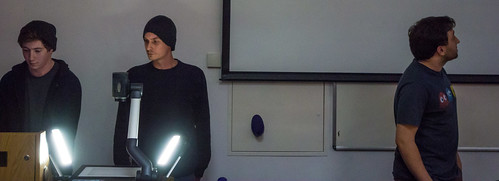
This team, the Cunning Stunts (careful how you say that) had made a game called “FlusterCluck” (careful how you say that too) starting from “Jetpack”, “sponge” and “chicken”. The chicken is the good guy, the sponges spawn at an amazing rate and after a few seconds things get very flustered indeed. Very good work from Jamie Hickman, Tom Richardson and Ricardo Real.

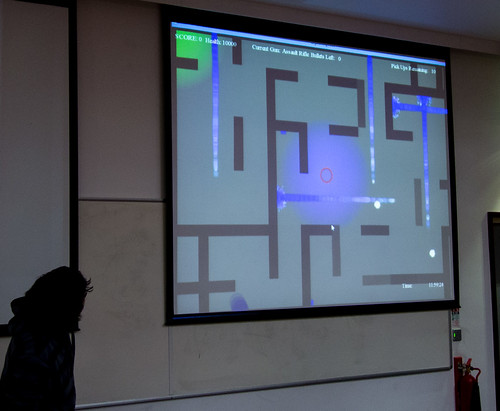
Betajester are another team of Three Thing Game stallwarts. And they used the skills they have acquired over the years to produce a frantic top down maze game from “Lasers”, “Trap” and “At Midnight”. We could see the traps, and the lasers, But we weren’t quite sure where the Midnight element fitted in. Then the clock clicked over, the screen went dark, the bad guys appeared and the whole game went manic. Great atmospheric fun (and good use of shaders) from Adam Boyne, Josh Porter and
|
|
Ryan Lay.
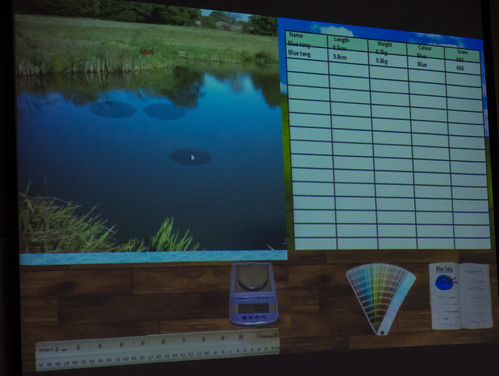

Team “88 Rob Miles Per Hour” had the less than enticing trio of “Database”, “Speed” and “goes fishing” as their things. But Daniel Pearson, Ben Redpath, Daniel Szczech and Chris Cawkwell stayed true to their theme and game up with a game that had you catching fish, measuring them and then entering the details into a database. All great fun and the best interpretation of things that I’ve seen in a long while.

So, after all nine had presented we got to the prizes. These three stayed around long enough to pick up their Third Place prizes. Well done to “88 Rob Miles Per Hour”. Their quirky gameplay and strict adherence to them got them into third.
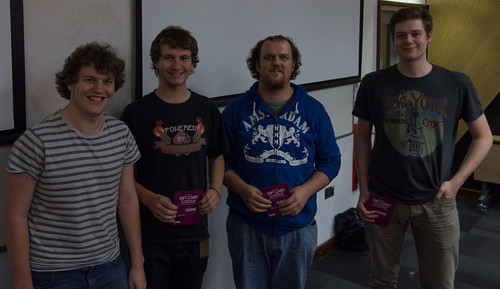
The “Rusty Spoons” stunning graphics and neat gameplay got them into Second Place.

Which left Betajester as the overall winners this time. They hit the theme well with an excellent piece of gameplay presentation with genuinely scary elements. Fantastic stuff.
One of the judges remarked on me that the standard gets higher each time we do this. I agree. Kudos to everyone who took part. If you didn’t make it to the end, no worries. The whole basis of “Three Thing Game” is that you learn what you can achieve in the time, pick up more skills and come round again. Stay tuned for Three Thing Game Spring 2014.
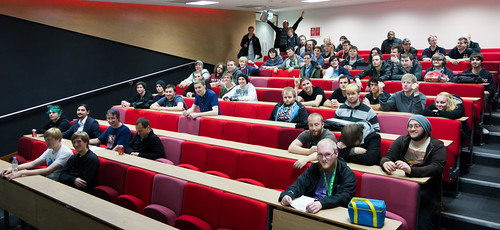
These are the survivors of the finals. Great work folks. Everyone who took part in the competition is awarded a Three Thing Game certificate. Contact me if you want yours.


